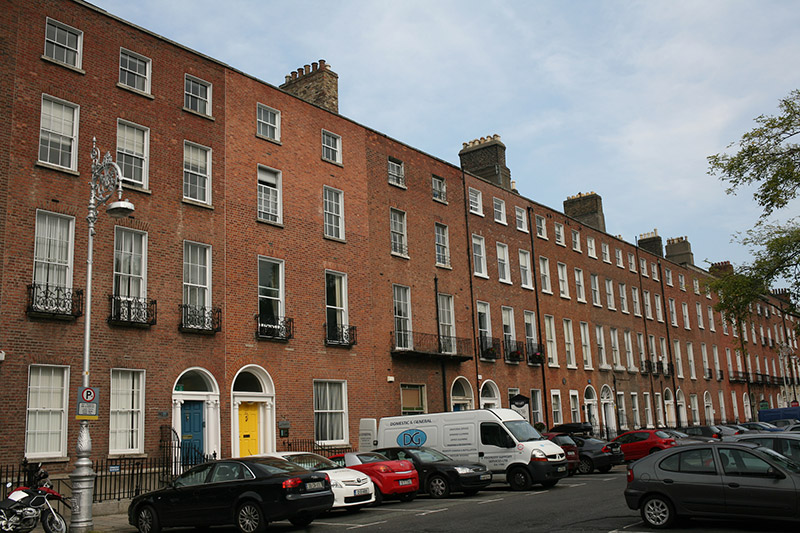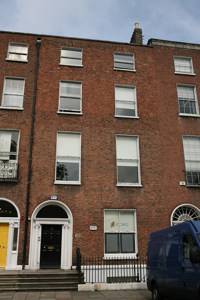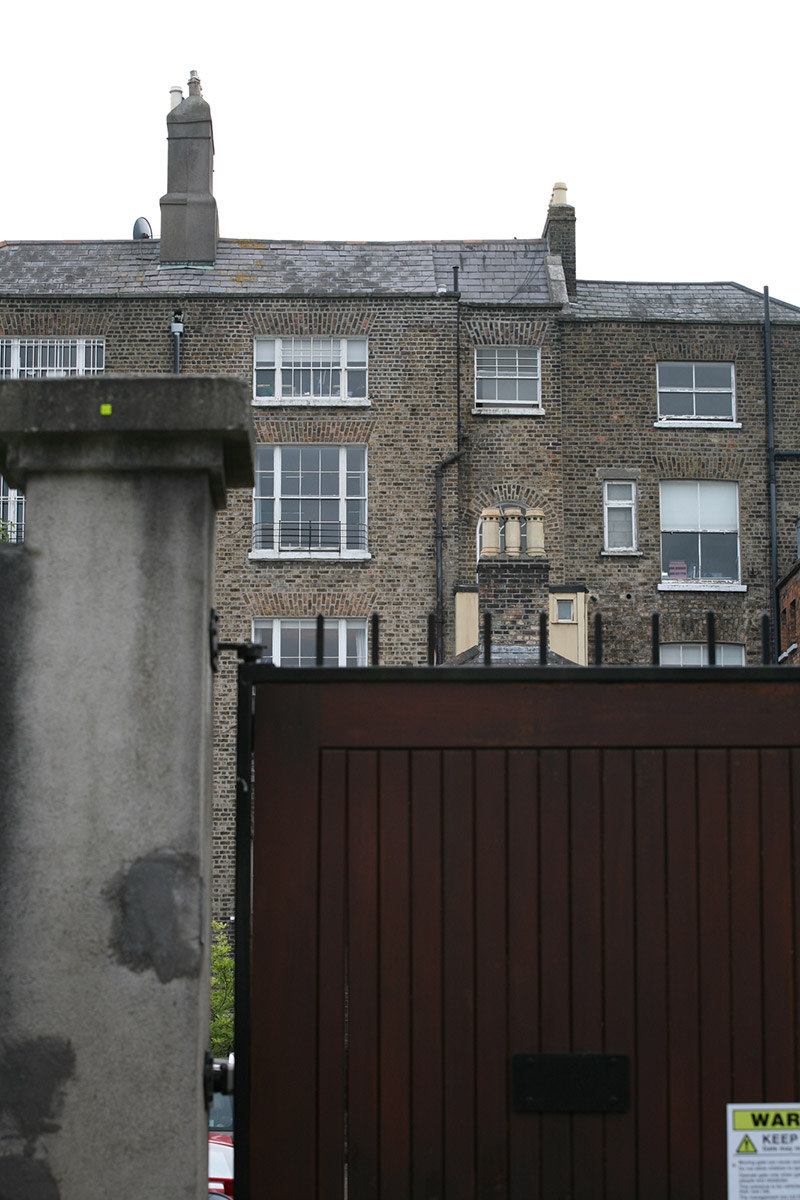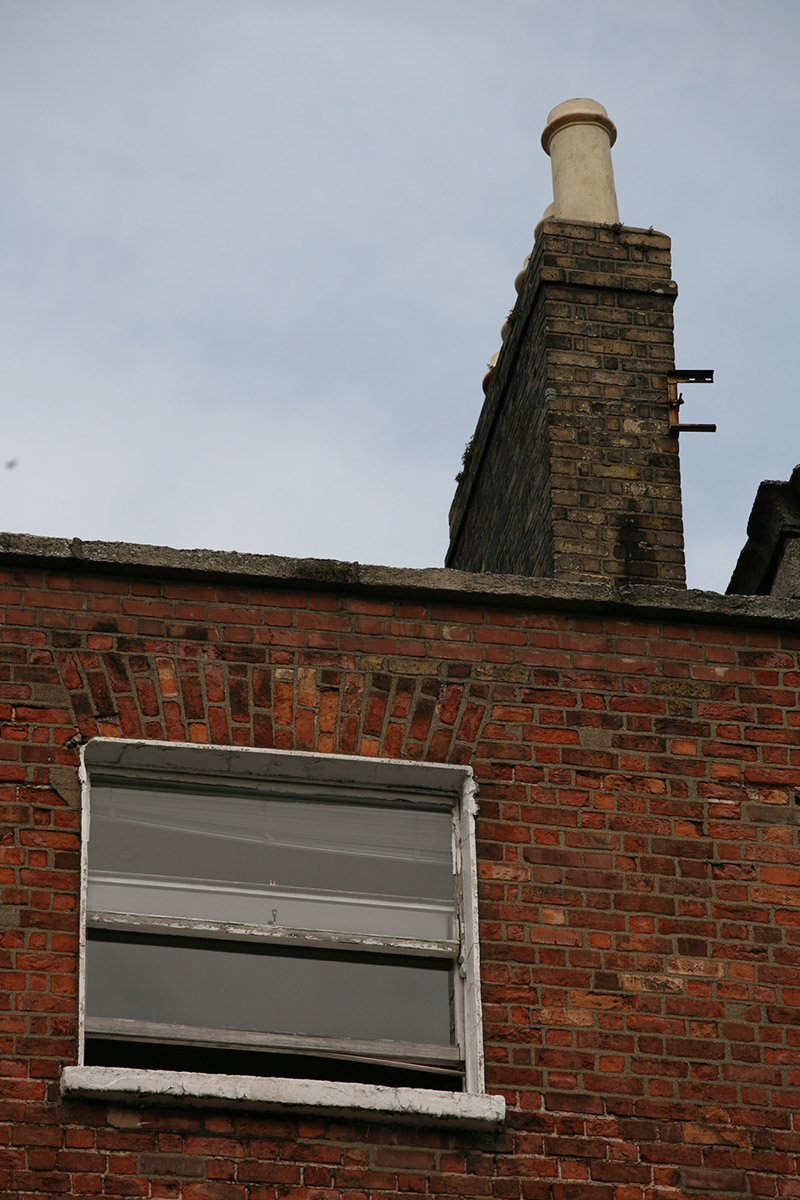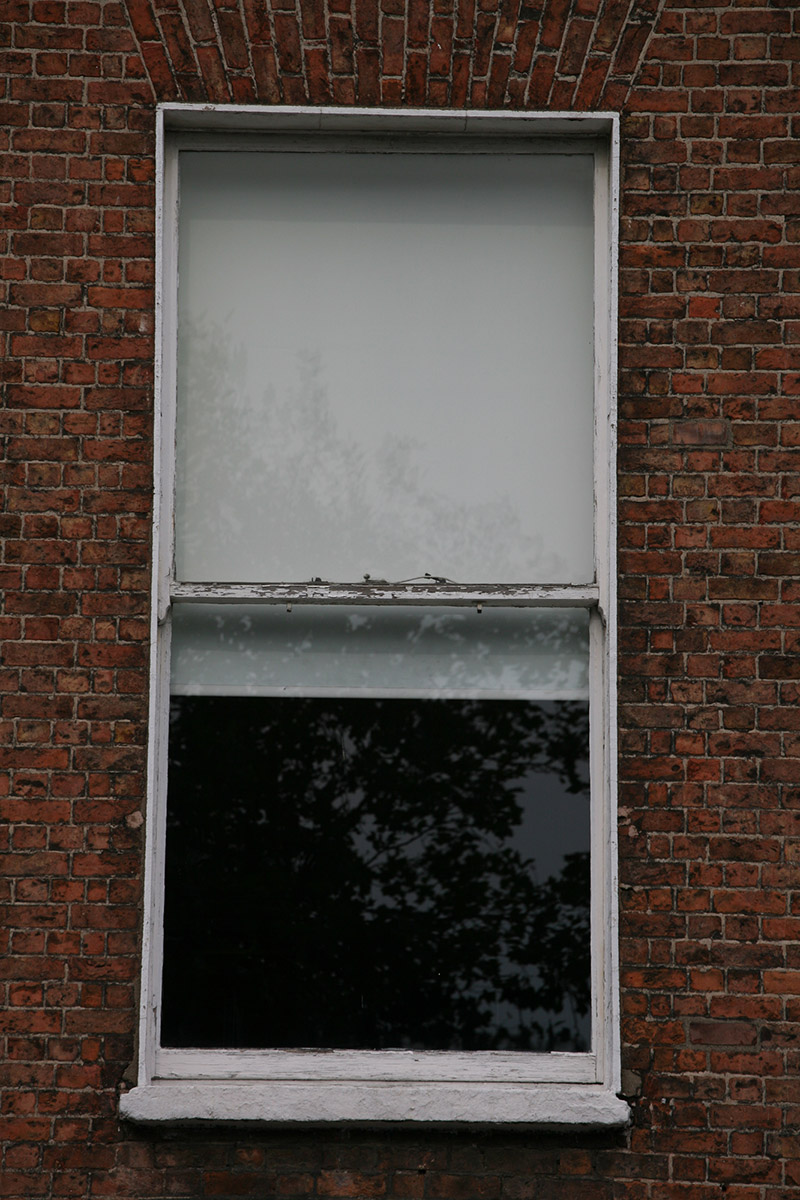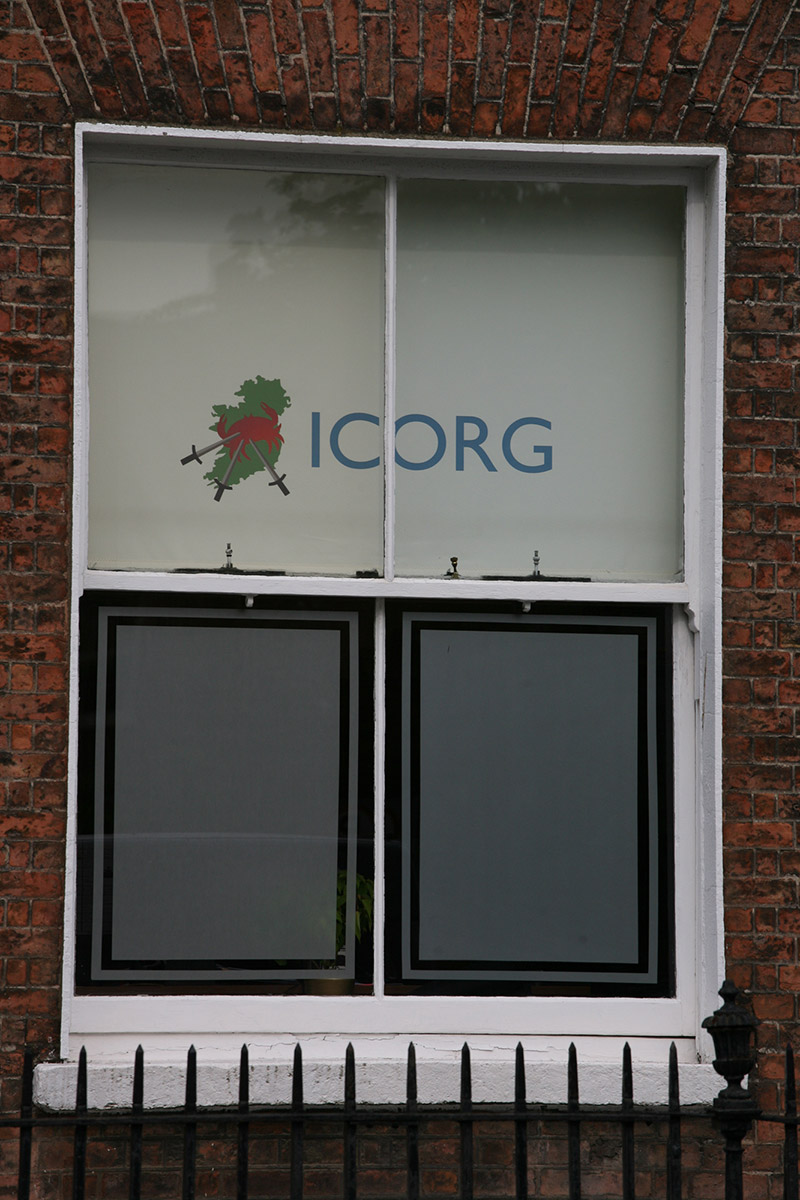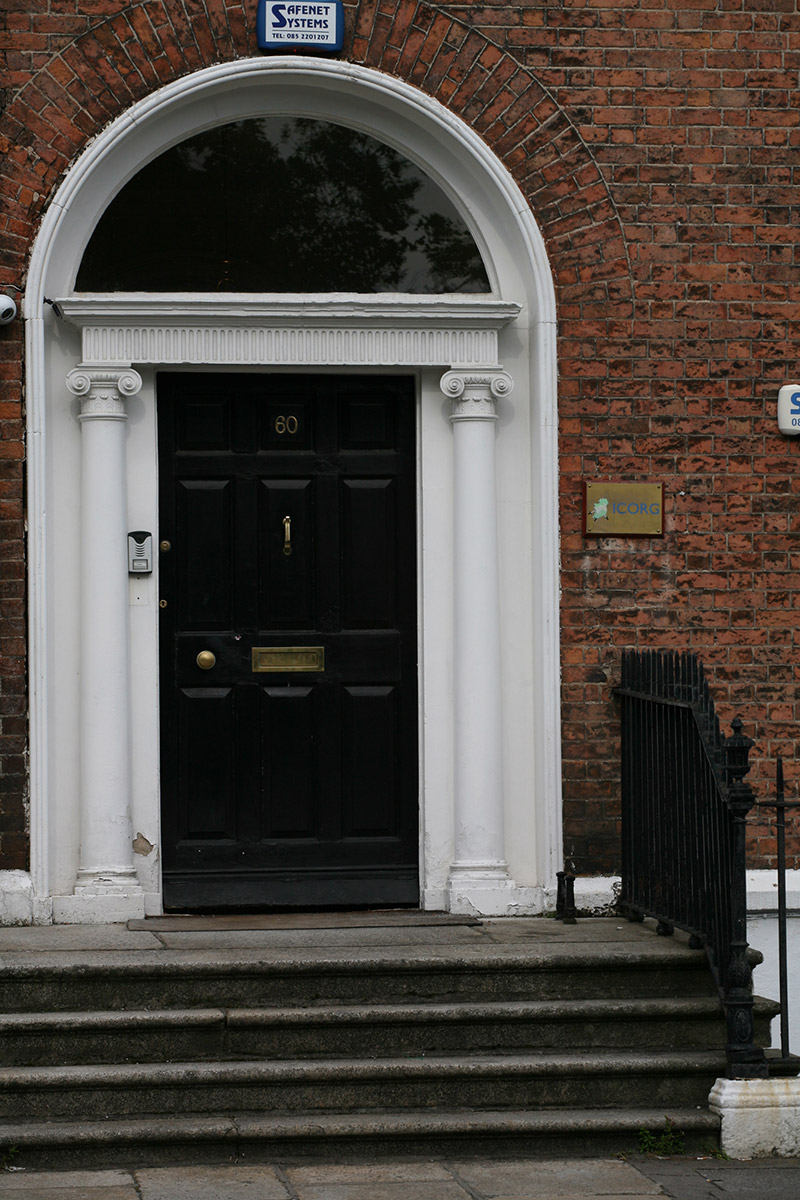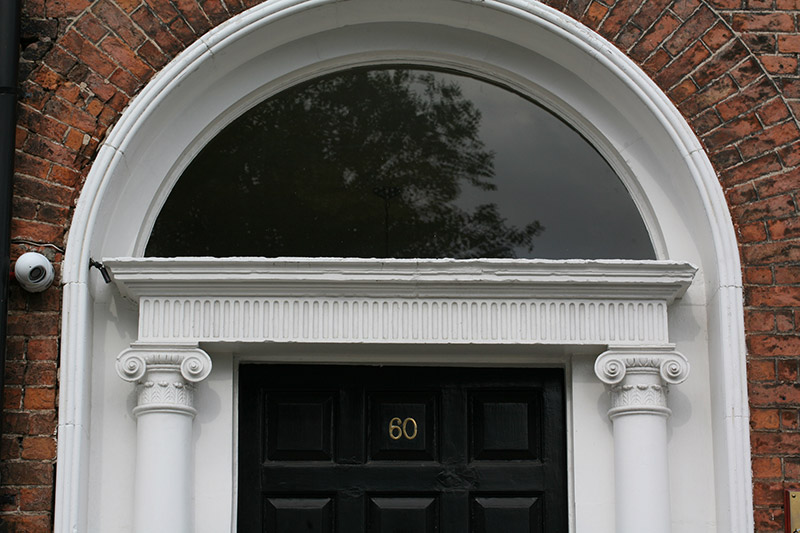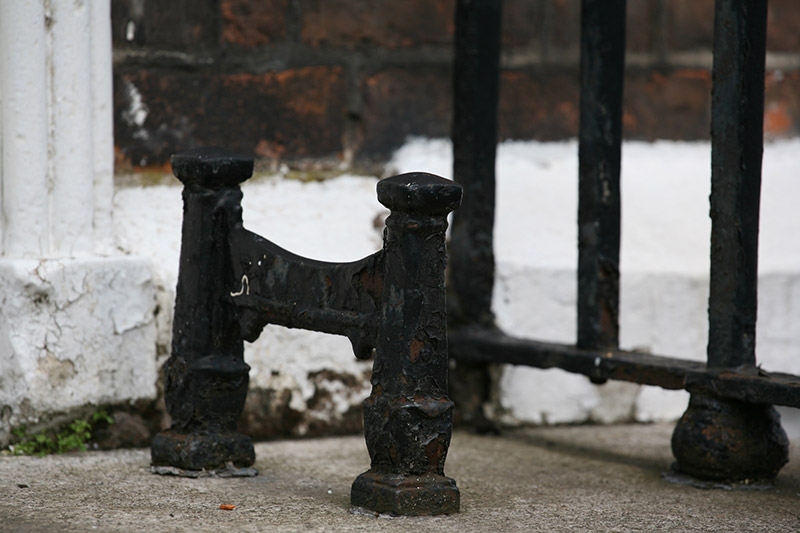Survey Data
Reg No
50930087
Rating
Regional
Categories of Special Interest
Architectural, Artistic
Original Use
House
In Use As
Office
Date
1790 - 1810
Coordinates
316516, 233143
Date Recorded
10/09/2015
Date Updated
--/--/--
Description
Terraced two-bay four-storey over basement former townhouse, built c. 1800, with two- and single-storey brick return. Now in use as offices. M-profile slate roof, hipped to west and set behind parapet wall with granite coping, plastic hopper and downpipe breaking through parapet to west. Brick chimneystacks with lipped clay pots to east party wall. Red brick walls laid in Flemish bond with lime pointing. Moulded granite plinth course over ruled-and-lined rendered basement wall. Gauged brick square-headed window openings with granite sills and timber sash windows; original eight-over-eight pane to basement with iron grille, twentieth-century replacement one-over-one to remainder with horns, and a single two-over-two to ground floor. Two-over-two timber sash windows to rear elevation, eight-over-eight to first floor and diminutive uPVC insert to second floor. Gauged brick round-headed door opening with masonry Ionic doorcase comprising square-headed door opening flanked by engaged Ionic columns supporting fluted lintel entablature and plain glazed fanlight. Original timber panelled door with eleven raised-and-fielded panels and brass door furniture opening onto shared granite platform with iron boot scraper and nosed granite steps to street. Platform and basement enclosed by original wrought- and cast-iron railings set on granite plinth wall. Steel steps provide access to basement. Forming part of a continuous terrace of former townhouses lining north side of Fitzwilliam Square. Rendered wall and recent timber gates to south boundary on Pembroke Lane.
Appraisal
This former townhouse retains its overall external composition, some early wigged lime pointed brickwork, well executed ironwork and a handsome doorcase which forms the building's decorative focus. It contributes to the historic character of the square and the wider south Georgian core. According to Casey (2005), the entrance hall retains an eagle centrepiece. There is a similar feature in Nos. 7,10,41 and 68. Laid out in 1791 by the surveyors J & P Roe, Fitzwilliam Square was the last of the city’s Georgian squares to be completed. Development was staggered and progressed slowly until after the Napoleonic Wars.
